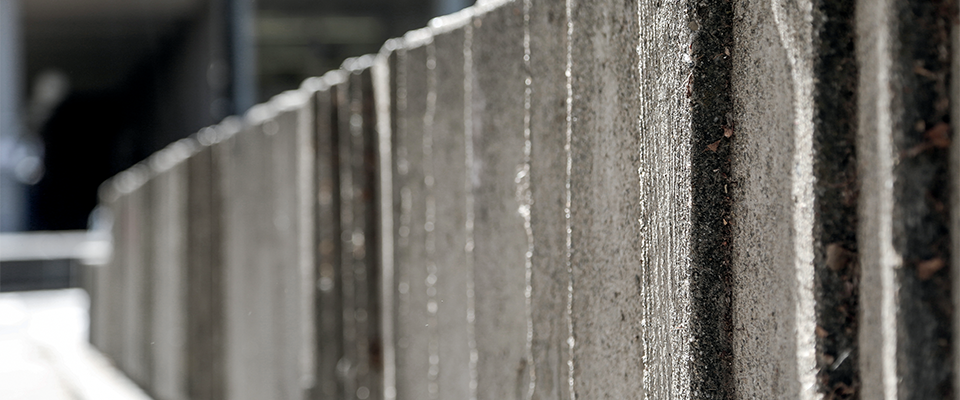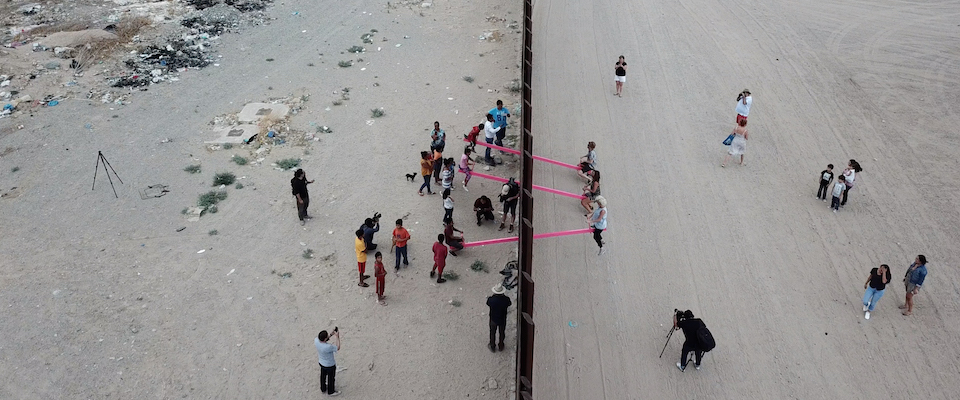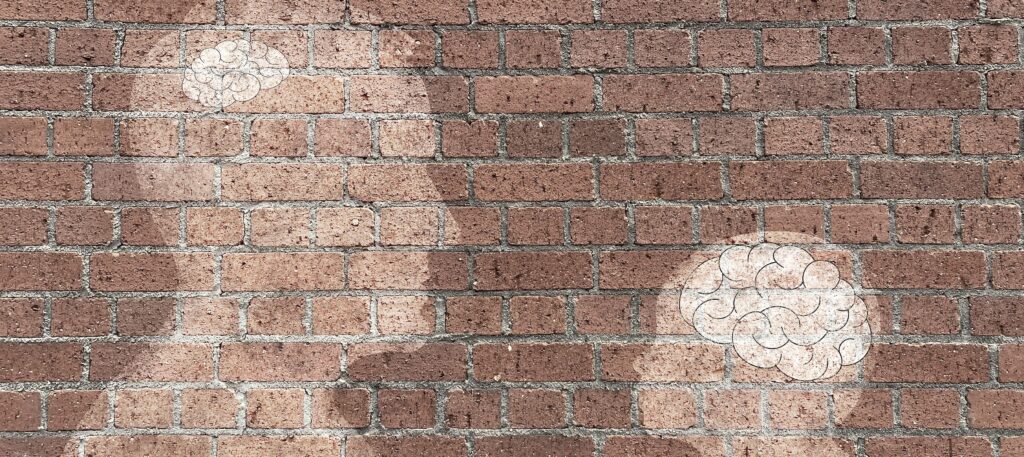WALLS HOLD A MYTHICAL PLACE IN OUR SOCIAL ORDER. Pilgrims push slips of paper with wishes and prayers into the many cracks of the Wailing Wall in Jerusalem. The Great Wall of China is a spectacle of ancient defensive architecture and a symbol of strength. The Berlin Wall evolved from a barbed wire and cinder block line of demarcation into a series of 15-foot-high concrete walls separating East and West Germany. It was a Cold War monument to their conflicting ideologies.
Those walls were symbols that branded the identity of countries, their political philosophies, and their people. UC Berkeley has its own wall, but, unlike most other walls, it brings people together. “The wall,” located in the heart of Cal’s campus at Sproul Plaza, has long been a communal space where Black folks gather and connect.
The wall itself is a simple, nondescript concrete structure standing a few feet high and roughly 50 feet long, behind which is a row of bike racks and a set of steps leading to the Golden Bear Café. But what it stands for is significant.
Black students have always been a tiny minority of the school’s population, but when they gathered at the wall as a group, the number didn’t feel so small. For over 50 years, the wall has served as an unofficial meeting place where students could feel culturally represented and find a sense of comfort and belonging.
This year several student groups at UC Berkeley, known informally as “the Triad” (African American Student Development, Black Student Union, and Black Recruitment and Retention Center) and the Campus Experience Working Group made a recommendation to memorialize the wall to celebrate the legacy and impact that the Black community imprints on Cal. The memorial will be a reimagining of that public space.

As of this writing, the design for the wall has not been finalized, but ideas include painting it red, black, and green like the colors of the Pan-African flag and putting up markers so that people know they are entering a sacred space. Walter Hood, a professor of landscape architecture & environmental planning and urban design, also presented ideas that were discussed at a talk in September titled “Stories of the Black Wednesdays: Reimagining Space for Public Art at UC Berkeley.”
“We should grab it all. The creek. The space,” Hood said in the webinar. “We should try to reimagine the space because you have everything there. You have water, you have vegetation, trees. Most people don’t even know the creek is there. There is a powerful narrative here, and we can start to exhume the landscape, what’s beneath, the ground, and start to speak about it in a different way.”
Mia Settles-Tidwell, an African American alumna, and Cal’s current assistant vice chancellor and chief of staff for equity and inclusion, fully supports the recommendation.
“The wall is a historic and traditional site of Black excellence, belonging, innovation and community,” she said in an email. “Memorializing the wall symbolizes UC Berkeley’s commitment to the Black community, acknowledges the multiple contributions of current students and Black alumni, and enshrines Black existence, persistence, and resilience throughout decades of growth despite limits.”
Timothy Bluitt attended Berkeley from 1970 to 1974 after serving a 13-month tour in the Vietnam War. He studied philosophy and often went to the wall to check out the scene there. Back then, the Black Power movement was at its peak. Black people proudly wore their hair in afro hairstyles and donned dashikis in a nod to mother Africa. According to Bluitt, you could feel the energy when you entered that space.

Bluitt remembers watching a future star work on her craft at the wall.
“Whoopi Goldberg used to come up there and do her street performance on campus,” he says. “She would wrap a T-shirt or towel around her head and wave her head back and forth making fun of a white girl with blonde hair.”
Goldberg would go on to play that character on a Broadway stage, but Bluitt said the campus police eventually banned her from campus because of the profanity in her performance.
“It was so alive,” he says. “I can see how a lot of people got distracted, not going to class, because there was so much going on in that particular area.”
The wall was a popular place for people to hang out—and to check each other out.
“These brothers used to stand there and make catcalls and flirt with the women as they walked by,” Bluitt says. “One of the Black custodians saw me and pulled me to the side, and told me, ‘You should be ashamed of yourself.’ And I said, ‘What are you talking about?’ He said, ‘You’re wasting your time doing this.’ Then he told me about the sacrifices he and other custodians made for us. They actually threatened to go on strike because they didn’t see any of us there.”
After their talk, Bluitt noticed that many of the Black students would shy away from the Black custodians. They didn’t want to recognize them. He said the custodian reminded him of his working-class father, so he took his advice: hang out less, study more.
Wayne Riley graduated in 1984. He said that some of his fondest memories began and ended at the wall.

“I’m originally from the East Coast, and in high school, I only applied to one college—Howard University,” he says. “After getting accepted and attending the summer orientation, I made a last-minute decision to forego my admission there and came out to California to be with my older brother, DJ Riley.”
Wayne took classes at the College of Alameda to gain transfer credits and eventually joined his brother at Cal.
“I spent all my non-academic time hanging out at Cal with my brother,” he says. “He turned me on to the wall, which became a daily meeting spot to see the few but mighty people of color at UCB.”
Campus geography had a hand in Riley’s experience. His classes took place near Sproul Plaza, in Barrows Hall.
“The true magic … came when I transferred into Cal’s Undergraduate School of Business,” he says. I focused my schedule around having a couple of classes a day but making sure I was free at noon daily when the wall was most poppin’. It was my daily happy place.”
“I’m also a member of Alpha Phi Alpha fraternity,” he says. “We brought our pledge activities, step shows, and Greek life out to the center of Cal’s campus often, and the wall became the place to showcase one’s ‘stepping’ talents, recite our proud Afrocentric history, and demonstrate our culture, intelligence, and brotherhood.”

Patricia Stewart Owyang says in a text, “Looking back … I realize it gave us a chance to see other people that looked like us when there were so few of us around. It gave us a safe place to learn from each other and talk about our daily escapades, challenges, and successes. We strolled, stepped, danced, laughed, and had so much fun there. Some of us met our future spouses, and many of us built lasting relationships that are still with us today.”
In the talk about public spaces, Mia Settles-Tidwell reflects on how much meaning the reimagining of the space known as the wall will have on the UC Berkeley community.
“There is a long history at the wall, so memorializing it is not only appropriate, but it is overdue. It was more than space, it was a part of our identity and our existence.”
Ande Richards is currently enrolled in the Graduate School of Journalism. She makes her home in South L.A. with her rescue pit bull, Ralph.





















